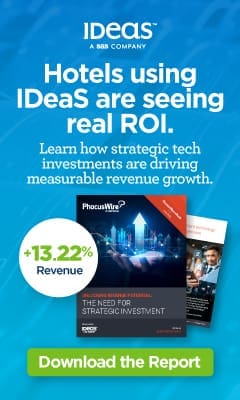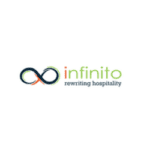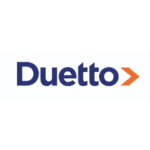 Each economic crisis, in 1990, 2009 and now 2020, has forced changed in the hotel revenue management discipline. The most recent disruption, Covid-19, has created an acceleration in Artificial Intelligence plus the redefinition of certain segments or the expectations from key revenue-generating departments.
Each economic crisis, in 1990, 2009 and now 2020, has forced changed in the hotel revenue management discipline. The most recent disruption, Covid-19, has created an acceleration in Artificial Intelligence plus the redefinition of certain segments or the expectations from key revenue-generating departments.
Redefining the role of hotel revenue leaders
Revenue Directors now have more tools to access a myriad of information, spending less time building reports and more time analyzing and making more informed decisions.
As the COVID-19 crisis exposes the limits of existing Revenue Management systems, Revenue Directors are moving away from being gatekeepers to being revenue generators. This requires a systemic approach and a close collaboration with other key departments to develop tactical and long-term strategies.
The role of hotel revenue leaders is to establish the hotel rate strategy by segment, channel and room type and find the optimal mix for the hotel depending on the demand level. Traditionally, Revenue Directors were primarily responsible for the public transient strategy and used rate and pricing data products to monitor and adjust rates and promotions. They have been working closely with the Online Travel Agencies which is only one piece of the puzzle.
Collaboration on hotel digital marketing strategies
The direct channel is a key component of the COVID-19 recovery. Revenue Directors now need to work closely with their Marketing counterparts, not to discuss a few packages and PR tactics, but to learn from each other and implement strategies together.
The Digital Marketing Team has access to a goldmine of information including top pages visited on the website, abandonment data, top rates booked by geographic market, top searches by number of adults or by length of stay. This data is key to understanding continuously how guests are booking and what they are seeking.
On the other hand, the Revenue Team has access to actualized stay data and can also filter it by channel, promotion code, booking date, length of stay, room type and so on. This data is key to understanding the most profitable offers based on all revenue contributions and the sources of business.
Hotel revenue and marketing teams to converge
Marrying the two buckets of information on a weekly basis enables the teams to:
- Create targeted offers that show value to the customers and increase their total revenue spent.
- Shift how they have traditionally spent marketing dollars based on ROI, and now spend on the most profitable sources of business.
- Use the visitor and the actualized data information to continuously create and adapt the tactics and messaging used for each type of customer throughout their booking journey
Collaboration to fuel hotel sales efforts
The level of collaboration between Sales and Revenue Management varies greatly depending on the company. Traditionally, the two departments have been working in silos and sometimes do not even seem to have the same strategy for the hotel mix and rate.
During the COVID crisis, due to reduced teams and the need to find creative ways to generate revenues, the two disciplines have been collaborating more – a trend that needs to continue in the future as demand ramps up.
When it comes to negotiated rates and groups, Revenue Directors have been working closely with Sales Teams to decide on availability and pricing to maximize rooms and ancillary revenues. With lower demand, fewer meetings and companies allocating less to the travel budget, it is even more critical to understand how COVID-19 impacted demand and reevaluate the sales guidelines to maximize the overall revenue contribution of each piece of business.
Joint analysis and comparison pre- and post-COVID-19
- Meeting room usage per day of week and time of day
- Average number of attendees per meeting space requested versus actualized
- Required Room Rental for smaller event to offset the required Food & Beverage minimum by meeting room
- Profitability of Parking, Audio Visual, Spa and Food & Beverage revenues
Prospect hotel opportunities together
Both the Revenue and Sales Team have seen a reduced workforce due to Covid-19. Therefore, there is a greater need to collaborate on building a step-by-step recovery strategy whose prospecting efforts are aligned. Accounts that used to be “not the right clients” or have minimal production may now very well be a great option to pursue and the success of a hotel may lie in finding these opportunities.
It is critical to embrace the analytical and synthetic skills of Revenue Directors. They can scrutinize market reports to help find every opportunity that makes sense for the Sales Team to prospect.
Seeing past hotel topline revenue
In addition to collaborating with the Sales & Marketing Teams to generate revenues, the Revenue Director also needs to pay much more attention to the costs incurred by each segment to ensure the top line revenues are as profitable as possible.
Below is a quick to-do list as business ramps up:
-
Establish the cost of acquisition for each channel
Whether a hotel operates as a referral, a franchise or a management company, the costs of acquisition vary greatly. Companies such as Kalibri Labs can be a great help to direct efforts to ensure maximizing revenues means maximizing profits. Before even using these companies, Revenue Directors need to determine the cost of acquisition by channel for their own hotel.
With COVID-19, this may be a unique opportunity for owners to re-negotiate contracts to lower transaction fees based on the mix of business or even to switch management companies or referrals.
-
Determine the variable costs for each additional reservation
The variable costs per occupied room include linen cleaning, guest supplies, cleaning supplies, travel agent commission, transaction fee, credit card commission, brand fee and energy. These costs may have changed due to COVID-19 so it is key to revisit these costs to ensure the lowest promotional or group rate is still profitable.
-
Understand the occupancy threshold on staffing level
Due to the low occupancies of hotels, especially mid-week, the Revenue Director needs to know the occupancy level that triggers the need for additional staffing.
Depending on the hotel, the staffing level may be the same whether you are at 10% or 20% occupancy. which naturally means that the cost per occupied room will be much greater at 10% than at 20%. Establishing these metrics with the Finance Director will later help when evaluating whether to take lower rated channels or group business.
Breaking down silos in hotel strategy teams
During the COVID-19 crisis, one can easily wonder what Revenue Directors had to revenue manage. The lack of demand and compression pushed Revenue Directors to step out of their comfort zone to look for ways to generate revenues. 















